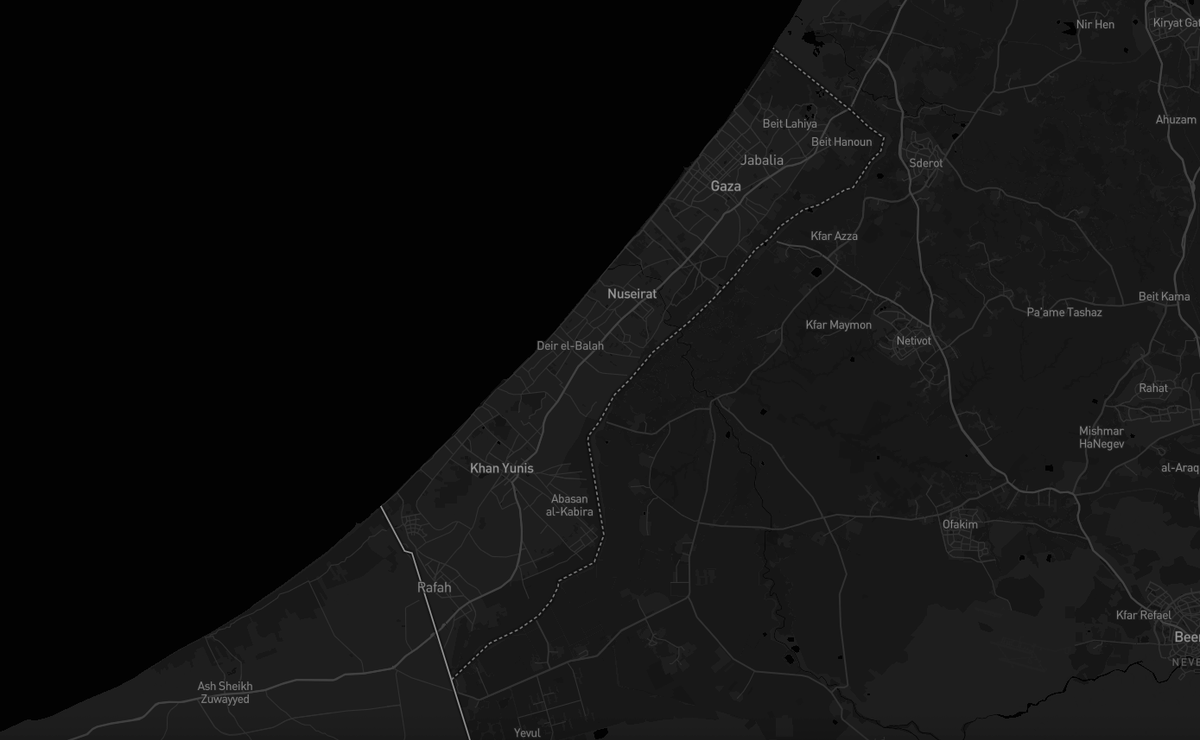Gaza City’s Fragility in Focus: Analysis of the 2025 Ranking

Gaza City is ranked the world’s most fragile city in 2025, following extreme conflict, institutional collapse, and widespread humanitarian catastrophe.
All five fragility dimensions—security, governance, socioeconomic, environmental, and infrastructure—are critically degraded, creating compounding risks and barriers to recovery.
The next five years will determine whether Gaza stabilizes through coordinated reconstruction and political reform—or becomes a permanently failed urban zone.
Gaza City has emerged at the top of the Global Institute for National Capability (GINC)’s 2025 Fragility Ranking – the single most fragile urban environment worldwide . This distinction comes amid the aftermath of the catastrophic 2024–2025 war that ravaged Gaza City, driving its fragility scores to near-maximum across all measured dimensions . In practical terms, Gaza’s inclusion as the #1 most fragile city signals an unprecedented urban crisis: basic governance and services have crumbled, humanitarian needs are overwhelming, and day-to-day survival has become precarious. The case of Gaza City exemplifies how full-scale conflict in a densely populated enclave can shatter urban resilience and push an already vulnerable city into extreme fragility.
This ranking has broader implications beyond Gaza. It highlights a global pattern wherein urban fragility arises not only from active warzones but also from economic collapse, poor governance, and climate stresses. Alongside Gaza, cities like Port-au-Prince, Khartoum, and Sana’a feature at the top of the 2025 index due to near-total collapse of state functions, security breakdowns, and imploded economies . Meanwhile, other cities outside active conflicts – from Caracas to Dhaka – also rank highly, illustrating that fragility can stem from governance failures, economic crises, or environmental pressures even absent outright war . In this context, Gaza City’s plight is both unique in its intensity and emblematic of a wider trend: fragile cities are emerging as focal points of human insecurity that demand urgent policy attention.
At its core, urban fragility means a city’s institutions and social contracts have broken down to the point where they cannot guarantee basic safety or services . In Gaza City, this breakdown is near absolute. The following sections examine Gaza’s condition through GINC’s five dimensions of fragility – Security, Governance, Socioeconomic factors, Environmental challenges, and Infrastructure – to unpack how each dimension contributes to Gaza’s extreme fragility. Key indicators of Gaza City’s crisis are summarized below, painting a stark picture of a city on the brink:
Gaza City at a Glance
|
Metric |
Value (2025) |
|---|---|
|
Population (pre-war est.) |
~0.8 million (largely displaced post-2024) |
|
Unemployment Rate |
~80% (economic collapse due to war) |
|
Grid Electricity Access |
Essentially none (2.1 million Gazans without power) |
|
Clean Water Access |
~30% of households (70% lack safe water) |
|
Aid Dependency |
~95% of population reliant on aid |
Sources: GINC 2025 Fragility Index; UN OCHA; World Bank; NRC/Al Jazeera.
Security
Security & Conflict: Gaza City’s security situation in 2025 is essentially non-existent, scoring a perfect 10.0 (the worst possible) on GINC’s security vulnerability scale . Over the past year, the city became the epicenter of intense urban warfare. Israeli bombardments and ground incursions leveled entire districts, and civilian casualties reached staggering levels – by March 2025 over 48,000 Palestinians had been killed in Gaza since the conflict’s onset . This means nearly every family in Gaza City has been touched by bereavement, injury, or trauma. Law and order have evaporated; local police and security services ceased to function amid the fighting, and residents have lived under continuous threat from airstrikes and shelling. As GINC’s analysis notes, no city can function without basic safety – in Gaza’s case, daily life has been defined by danger and chaos, with “nowhere safe” even in designated shelters. The result is a total collapse of public security: neighborhoods lie in ruins, curfews and combat operations disrupt any semblance of normal life, and the social fabric is frayed by fear.
The implications of Gaza City’s security vacuum are profound. High insecurity has eroded trust in any governing authority and deterred outside investment or aid operations due to safety concerns. Humanitarian actors describe conditions as among the worst they’ve ever seen, hampering relief delivery just when it’s needed most. The pervasive violence has also fueled displacement (addressed below) as families flee within the enclave in search of relative safety. In short, Gaza’s active conflict has decimated personal and community security, making stability impossible. This extreme insecurity not only scores Gaza at the top of fragility indices , but raises the risk of further violence – crime, factional unrest, or exploitation – taking root in the governance void. Any future recovery will first require a durable end to large-scale hostilities and restoration of basic law and order.
Governance
Governance & Political Stability: Gaza City’s governance structures have been severely compromised and delegitimized by years of isolation and the recent war. Even prior to 2024, Gaza was governed by the de facto Hamas administration under blockade, with limited capacity and contested legitimacy. The war then dealt a crippling blow: many government offices, records, and facilities were destroyed, and officials themselves were not spared the conflict’s impacts. In GINC’s ranking Gaza scored a 9.0 in governance fragility (on a 10 worst scale), reflecting a near collapse of effective authority. Local institutions are largely unable to deliver services or enforce rules. The social contract between residents and any governing body has effectively disintegrated – residents do not expect protection or basic provisions from authorities at this point. Instead, they rely on ad-hoc community efforts and international aid agencies for survival.
GINC’s framework emphasizes that in fragile cities, the state’s presence is often minimal or absent, or governance is fragmented and politicized . Gaza exemplifies this: the Palestinian Authority has no foothold in the city, Hamas’s capacity to govern is crippled by the ongoing siege and destruction, and no external governance mechanism exists for the interim. Rule of law is in abeyance – courts and legal processes cannot function under bombardment, and informal or parallel systems (families, militias) fill the void. Corruption and mismanagement, long an issue under blockade, have been overshadowed by the sheer inability of institutions to operate now. Comparisons can be drawn to cities like Khartoum or Port-au-Prince, where governance vacuums enable chaos . In Gaza City, while some remnants of administrative control persist (for example, coordinating limited relief distributions), the reality is governance has largely reverted to survival mode. The city’s fate is determined more by external military actors and humanitarian agencies than by any local government decision-making. This extreme governance fragility means that even if violence pauses, Gaza’s recovery would be undermined by the lack of a functional, legitimate authority to rebuild trust and lead reconstruction. Strengthening governance – either via a reunified Palestinian administration or an international arrangement – will be crucial to pulling Gaza out of fragility in the long run.
Socioeconomic
Economic Stability and Social Well-Being: Gaza City’s economy and social conditions have been eviscerated by conflict and blockade, yielding catastrophic socio-economic fragility. The war crushed what remained of the local economy – factories, shops, and businesses have been reduced to rubble or unable to operate, and Gaza’s once lively markets are mostly shuttered. Unemployment in Gaza has accordingly skyrocketed to roughly 80% , one of the highest rates ever recorded. Essentially, almost no one has a formal job or income now. The vast majority of families are reliant on humanitarian aid for basic survival (food, water, shelter) – estimates indicate about 95% of Gaza’s population is aid-dependent in 2025 . Such dependence is a stark indicator of economic collapse: people cannot earn livelihoods and are living hand-to-mouth via relief distributions. The currency and banking system in Gaza are non-functional; even those with savings cannot easily access them. Commerce with the outside world is nil due to the blockade. In effect, Gaza’s economy has regressed to a humanitarian subsistence level.
Accompanying the economic freefall is an acute social fragility that GINC also scores at a worst-possible 10.0 . The human toll of the war and siege is immense. Over 1.9 million Gazans (roughly 90% of the population) have been displaced at least once during the conflict, many multiple times , as they flee shifting frontlines and destruction. Entire communities from Gaza City’s north have been living in crowded temporary shelters in the south of the Strip. Families are separated; children have gone missing or been orphaned. Access to health care is extremely limited – many hospitals were bombed or lack power and supplies. Education has collapsed as well: most schools were damaged or turned into shelters, with normal schooling largely suspended for a year now. In early 2025, UNICEF and the World Bank noted that school buildings are serving as refugee shelters for tens of thousands, leaving virtually no space for education . This loss of education and normalcy for an entire generation has long-term implications on human capital. Meanwhile, poverty is essentially universal; formerly middle-class families have been impoverished overnight. Malnutrition and disease are rising as clean water and food are scarce. Social cohesion is under strain – while Gazans traditionally have strong community networks, the prolonged trauma and competition for resources test these bonds. The overall picture is a society in acute crisis: mass displacement, hunger, trauma, and loss of life opportunities. Such conditions both result from and further exacerbate fragility: for instance, high unemployment and idle youth can increase instability, and poor health and education undermine future recovery prospects. Addressing Gaza City’s socio-economic collapse will require not just rebuilding infrastructure, but also healing social wounds – through psychosocial support, equitable aid distribution, and eventually job creation and economic revitalization.
Environmental
Environmental & Climate Vulnerability: While conflict is the immediate cause of Gaza City’s suffering, environmental factors compound the fragility and will pose serious challenges going forward. GINC’s ranking gives Gaza a high environmental vulnerability score (8.0), recognizing issues like water scarcity, pollution, and lack of climate resilience. Years of overuse and contamination had already rendered Gaza’s sole aquifer nearly undrinkable before the war, and now the situation is dire. With power outages halting sewage treatment and desalination, around 130,000 cubic meters of raw sewage have been flowing into the sea every day due to lack of fuel for pumps . This has polluted coastal waters and groundwater, worsening an already severe clean water shortage. As noted, 70% of households have no access to safe water – a public health emergency. Groundwater wells were also destroyed or rendered useless by military operations . The war’s bombardment has released hazardous materials (asbestos, industrial chemicals, heavy metals) into Gaza’s environment . Tons of rubble, mixed with toxic debris and unexploded ordnance, are piled in the city’s streets and neighborhoods. By early 2024 an estimated 50 million tonnes of debris and wreckage blanketed Gaza , with more added in subsequent months – an unprecedented environmental hazard. Air quality in Gaza City has also deteriorated, filled with smoke from constant explosions and from residents burning plastic and trash for fuel .
Compounding these man-made environmental crises are the climate and geographic vulnerabilities that Gaza faces. The city’s coastal location and very high population density make it susceptible to flooding and extreme weather impacts. Seasonal winter storms in the Mediterranean can cause flash floods in Gaza’s poorly drained urban areas – now exacerbated by rubble blocking drains. With climate change, heatwaves are expected to intensify; enduring high temperatures is deadly when electricity for cooling is essentially unavailable. Gaza’s lack of green space or buffer zones (much of it is an urban concrete expanse) means less natural resilience to heat and flooding. Environmental fragility, as GINC highlights, often acts as a risk multiplier in fragile cities . In Gaza City, the breakdown of infrastructure and services means there is no capacity to cope with environmental shocks: a heavy rain or a disease outbreak can quickly turn catastrophic in current conditions. In sum, Gaza’s environment – from water and soil to air quality – has been gravely damaged and offers little relief. Addressing these issues will be critical not only for public health but for enabling people to live in the city at all. Environmental rehabilitation (cleaning up waste, restoring water systems, mitigating pollution) will need to be a pillar of any recovery plan to prevent Gaza from sliding further into uninhabitability.
Infrastructure
Physical Infrastructure & Basic Services: The physical infrastructure of Gaza City lies in ruins, underpinning all other dimensions of fragility. Months of bombardment have devastated the city’s built environment. Satellite analyses indicate that by early 2024 roughly 50–60% of all buildings in Gaza had been damaged or destroyed , and by the end of 2024 some estimates put that figure as high as 70% in heavily hit areas. Entire high-rise blocks, residential neighborhoods, roads, bridges, and markets – the backbone of an urban center – have been reduced to rubble. Critical infrastructure systems have also collapsed completely: the electricity grid was one of the first targets and remains down, the water and sewage networks have been smashed or deprived of power, and telecommunications are intermittent at best. Gaza City’s main hospital and other healthcare facilities suffered direct strikes or functional collapse, crippling emergency services. Waste management has ceased – over 70,000 tons of solid waste piled up in the streets within weeks , as collection vehicles could not operate. The combination of bombardment and siege has led to what observers call a total infrastructure failure: “war generally collapses everything. In Gaza, it’s made people exposed to additional risks from the destruction of anything the civilian population depends on,” noted one conflict analysis expert . From power lines to fuel supplies to municipal services, virtually all the pillars of modern urban living have been knocked out.
This infrastructural devastation not only causes immediate suffering but also hobbles any recovery prospects. For example, without electricity, water cannot be pumped to homes and hospitals cannot function; without roads and fuel, aid can’t be distributed effectively or reconstruction equipment can’t reach sites. The scale of rebuilding required is enormous – preliminary assessments by the World Bank and UN estimate that tens of billions of dollars will be needed to restore Gaza’s infrastructure and housing over the coming years. Key sectors include housing (an estimated 15 billion USD alone needed to rebuild homes), health facilities, education infrastructure, water/sanitation systems, and energy grids . Reconstructing Gaza City will thus be a herculean task: debris removal on a massive scale, then repairing and rebuilding thousands upon thousands of structures, all while trying to upgrade them to be more resilient than before. Until now, even basic repairs have been nearly impossible under the blockade (materials like cement and steel are heavily restricted). The war’s aftermath leaves Gaza in a worse state than perhaps any modern city in recent memory – an urban shell with its infrastructure gutted. International support, stable security, and effective governance (as discussed above) will all be required to even begin an infrastructure comeback. In the meantime, the lack of functioning infrastructure keeps Gaza City’s population in a state of extreme fragility: without power, water, sanitation, or shelter, the urban environment itself remains life-threatening.
Outlook
In the next five years, Gaza City faces a pivotal and perilous trajectory. If current conditions persist, the city could further spiral from fragility into permanent failure. The immediate risk is that without a sustained ceasefire or political resolution, violence could reignite, inflicting new waves of destruction on a population already at the breaking point. Even absent major combat, Israel’s ongoing blockade and security restrictions may continue, strangling any recovery. Under a worst-case scenario, Gaza City might remain an isolated wasteland “unable to sustain life” in some areas . Prolonged displacement could become semi-permanent if neighborhoods in the north are declared uninhabitable or cordoned off. Public health crises are a looming threat – epidemics of water-borne disease, for example, could emerge from the collapse of sanitation. Additionally, the brain drain and loss of human capital might accelerate: those who can leave Gaza will do so, reducing the skills base needed for reconstruction. The fragility will thus perpetuate itself, as lack of improvement feeds hopelessness and potentially extremism. In short, the risk factors that earned Gaza City the top fragility ranking are not abating soon without significant intervention.
However, there are also potential avenues for positive change that could alter Gaza’s trajectory. The very global spotlight on Gaza’s plight in 2024–2025 has spurred unprecedented international calls for reconstruction and a political solution. If a durable peace or at least long-term truce takes hold, it would open space for recovery efforts. International donors and organizations have signaled willingness to mobilize large-scale aid for Gaza’s rebuilding – this could jump-start the local economy and infrastructure rehabilitation if it materializes (and if materials are allowed in). There is also discussion of governance arrangements to improve stability – for instance, empowering the Palestinian Authority or a UN-mandated body in Gaza to coordinate reconstruction and service delivery. Such changes could gradually restore a degree of normal governance and accountability. Critically, Gaza’s people have shown remarkable resilience in past crises, rebuilding from wars in 2009, 2012, 2014, and so on. Local initiative and community solidarity, if supported, can be the foundation to slowly rebuild trust and social cohesion. The next five years could thus see Gaza City begin to climb down the fragility index – but only if concrete steps are taken to address the root causes (conflict, blockade, political division) and to invest heavily in its recovery. As GINC’s analysis underscores, humanitarian aid alone is not enough; it must be coupled with long-term strategies for governance reform, economic revival, and climate adaptation to truly reduce fragility .
From a policy perspective, the window to act is now. Gaza City’s extreme fragility is a warning of what can happen when an urban population is subjected to sustained conflict and deprivation. The next five years will determine whether Gaza can stabilize or whether it will become a chronically failed city. Key priorities will include establishing security (even if through international guarantees), lifting or easing the blockade to permit reconstruction, and ensuring any rebuilding is community-led and equitable to avoid exacerbating tensions. There are opportunities in aligning international efforts – for example, the U.S., EU, regional Arab states, and UN agencies have all expressed commitment to Gaza’s recovery; a coordinated Marshall Plan-like initiative could make a real difference. Equally, involving Gaza’s own residents in planning and decision-making will be vital to rebuilding the social contract. In an optimistic scenario, by 2030 Gaza City could begin to see restored neighborhoods, functioning schools and hospitals, and some economic activity resuming – turning it from a symbol of fragility into a case study in resilience. Achieving this will require extraordinary commitment and resources, as well as navigating complex politics. But the alternative – neglect and stagnation – would carry grave costs. Without action, today’s fragile city could become tomorrow’s failed city, with ripple effects across an entire region . The stakes for Gaza City, and for global urban stability, could not be higher.




